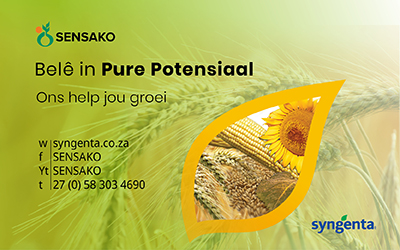Grain SA’s research department hosted a Plant Health Day on 16 August. The event focused on addressing the major challenges in plant health, reviewing ongoing actions, and enhancing collaboration among stakeholders. The event successfully identified the challenges in plant health as well as critical areas for enhancement, such as developing more comprehensive pest control strategies, while outlining actionable plans for improvement.
Plant health-related research at Grain SA currently focuses on three key areas and formed the basis of discussions on the day: (i) surveillance, diagnostics, and extension; (ii) the biology of diseases and pests; and (iii) integrated management approaches. Biological control was also discussed. This article will give the highlights of the discussions.
Surveillance and monitoring
Surveillance and monitoring are crucial for early detection of new pests and diseases that could enter South Africa, as well as for monitoring existing pests and diseases to detect any potential resurgence. Effective monitoring depends on strong communication between producers, researchers, and government bodies.
South African grain producers have access to several disease clinics for grain, such as the Disease Diagnostic Clinic at FABI (University of Pretoria), the Agricultural Research Council’s ARC-Grain Crops, and Stellenbosch University. These clinics play a key role by providing accurate and accessible pest and disease detection and identification. Active producer engagement in reporting issues to these clinics enhances early detection and management of diseases. This is crucial for addressing new and emerging threats and maintaining biosecurity. In addition to the clinics, modern tools such as mobile apps and automated traps have improved the ability to improve pest and disease surveillance by enabling a real-time detection of pests and diseases. Data and information from these tools can be consolidated and centralised, enabling users to make informed decisions in their practices.

Photo: Nolo Bakwa
Pests and diseases in the grain industry
Pests and diseases significantly impact the grain industry by reducing crop yields, increasing costs, and affecting grain quality. During the second session, presenters shed light on the array of pests and diseases affecting grains. The comprehensive list of threats presented highlighted the diverse challenges producers face. Key insights from the session emphasised the importance of understanding the biology and favourable environmental conditions of the pest or disease of interest for effective integrated pest and disease management.
Furthermore, the discussions emphasised the importance of South Africa improving its preparedness for emerging pests and diseases, while also anticipating future risks to the nation’s grain industry. This can be achieved by staying informed about global agricultural challenges and closely monitoring international developments.
The growing impact of agro biologicals: trends and challenges
Plant beneficial microorganisms or agro biologicals are becoming increasingly important in agriculture due to their ability to improve soil health and boost plant growth. This session had four focus areas:
- Adoption trends: Agro biologicals have advanced from early scepticism to growing acceptance. While the market for agro biologicals is growing – particularly in regions like Brazil, a leader in global adoption – there is still work to be done to build trust and demonstrate efficacy.
- Challenges in South Africa: Despite a mature market, South Africa faces hurdles such as inconsistent product performance, high costs, and difficulties integrating agro biologicals into traditional farming practices. The strict regulatory environment ensures product reliability but can also limit market entry. There is a need for local testing to adapt products to South African soil conditions.
- Accessible information: To boost adoption, accessible information on the benefits of agro biologicals compared to conventional methods like nitrogen fertilisers is needed. Trials and demonstrations that show tangible benefits are essential.
- Regulations: These are essential for ensuring product efficacy and safety, building market confidence, facilitating local adaptation, and fostering innovation. Ultimately regulations support the successful integration of products into agricultural practices.
Conclusion
Grain SA will continue to identify priority pests and diseases for solution-driven research projects. Sclerotinia diseases of soybean and sunflower remain a priority alongside determining the most prevalent soilborne diseases and nematodes. It is critical that producers have easy access to diagnostic clinics for the early detection and management of pests and diseases. Furthermore, engagements with the research community will continue to ensure industry relevant research is conducted on economically important pests and diseases to identify management approaches that can protect crop yields and contribute to producers’ profitability.



















